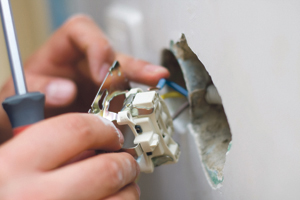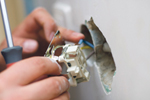NHS safety guidelines have recently been issued to instigate the removal of inserts from electrical sockets; Crowthorne has concerns about insert use within containment facilities too.
 A fundamental requirement for CL3 laboratories is that they must be sealed to permit fumigation under emergency conditions. This includes sealing all service penetrations into a room at point of seal. Leaks are however, frequently found coming from electrical sockets or surface-mounted trunking.
A fundamental requirement for CL3 laboratories is that they must be sealed to permit fumigation under emergency conditions. This includes sealing all service penetrations into a room at point of seal. Leaks are however, frequently found coming from electrical sockets or surface-mounted trunking.
Best practice is to deal with the problem at source, e.g. remove the socket and/or trunking to seal the back box and cable conduit. This method is however, both disruptive and not always possible to achieve. Socket inserts have become a common way of trying to reduce the risk at the open area of the socket, however, it relies heavily on lab staff compliance and doesn’t fully resolve the issue of the cables leaking at point of entry.
Although in favour of moving away from the use of inserts, Crowthorne’s concern lies in the implementation of the policy without first sealing all leak paths. Without full preparation, removal of inserts could render laboratories non-fumigatable and/or not operational at HSE compliant containment level 3. We therefore strongly recommend that all potential leaks via electrical services are sealed and tested to confirm a full seal has been achieved before inserts are removed.
CTA & Contact:
If you have any concerns over the guidance issued or wish to discuss a way forward without compromising your containment laboratory,
please contact us at: +44 (0)1252 372333 (UK) or +353 (0)1824 3670 (Ireland).

